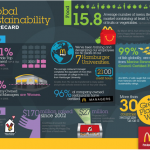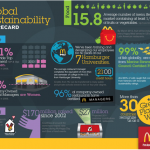 That ubiquitous snack food on the shelves of every Seven-Eleven and Mini-Mart, begging you to buy it, just occasionally, when you know you really shouldn’t has gone bankrupt. Yes, Twinkies (or the company that makes them and wonderful, squishy white Wonderbread) has filed for bankruptcy in the U.S. this week. Citing excessive debt and union troubles, the company can no longer survive. Twinkies are relatively high priced, so as the company’s cost structure has increased, they haven’t had much wiggle room to increase their sugar coated prices snack food prices either.
That ubiquitous snack food on the shelves of every Seven-Eleven and Mini-Mart, begging you to buy it, just occasionally, when you know you really shouldn’t has gone bankrupt. Yes, Twinkies (or the company that makes them and wonderful, squishy white Wonderbread) has filed for bankruptcy in the U.S. this week. Citing excessive debt and union troubles, the company can no longer survive. Twinkies are relatively high priced, so as the company’s cost structure has increased, they haven’t had much wiggle room to increase their sugar coated prices snack food prices either.
A more interesting question is: are Twinkies gone forever. Assuming that Hostess can’t restructure its way out of this, what happens to the Hostess brands. Will we never be able to enjoy that sickly sweet, teeth jarring filling that tastes oh-so-good every so often? The answer is likely YES! Brands, as we know, are worth a lot. And when a brand goes bankrupt, there are often lots of buyers at the auction to pick it up. Consider brands like Polariod, The Sharper Image and Borders (the US bookstore). Buyers paid $88 million for the Polaroid name in 2009 – good news for the bankrupt company as they have some cash to pay off their debts and usually get some equity in the new venture. Buyers of the Polaroid name have done well by extending the name into a line of electronics vs. just a camera, similarly with The Sharper Image.
It’s likely that the Twinkies, Wonderbread and Ding Dongs’ (another venerable Hostess brand) names are worth something to a buyer. Also worth considering, for that buyer, is whether those brands can be extended into other products within the category. Or is a Twinkie always a Twinkie?


